 |
 |
 |
|
 |
 |
 |
|
 |
|
|
 |
|
|
|
 |
|
2.2. Hilbert's Hotel. What is happening with the tiles is similar to what is happening in Hilbert’s paradox of the Grand Hotel. At Wikipedia we can find the following description: “Consider a hypothetical hotel with countably infinitely many rooms, all of which are occupied – that is to say every room contains a guest. One might be tempted to think that the hotel would not be able to accommodate any newly arriving guests, as would be the case with a finite number of rooms. Suppose a new guest arrives and wishes to be accommodated in the hotel. Because the hotel has infinitely many rooms, we can move the guest occupying room 1 to room 2, the guest occupying room 2 to room 3 and so on, and fit the newcomer into room 1. By repeating this procedure, it is possible to make room for any finite number of new guests.” |
|
|
 |
 |
|
|
 |
|
 |
|
|
Figure 4a: Hilbert's Hotel
|
Figure 4b: One new Guest
|
|
| It is also possible to accommodate a countably infinite number of new guests: just move the person occupying room 1 to room 2, the guest occupying room 2 to room 4, and in general room n to room 2n, and all the odd-numbered rooms will be free for the new guests. |
|
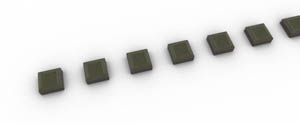 |
|
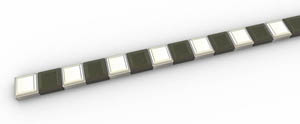 |
|
|
Figure 5a: Hilbert's Hotel
|
Figure 5b: Infinite number of new Guest
|
|
| And the next step is to expand this to two directions. |
|
 |
|
 |
|
 |
|
|
|
Figure 6a: Hilbert's Hotel
|
Figure 6a: Extra Space
|
Figure 6a: Occupied
|
|
3. Different Transformations
3.1. Sliding. When we slide the tiles away from each other as in Section 2.1 it looks like we end up with twice the number of tiles. When you see this in an animation, and especially when the animation is set in a continuous loop, more and more tiles seem to come up out of nowhere. There are more ways of moving the tiles to create this intriguing effect.
|
|
|
| 3.2. Sliding - 2 directions. The first one is also based on sliding, but now in two directions. |
|
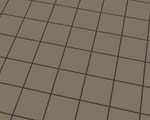 |
|
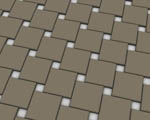 |
|
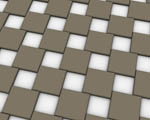 |
|
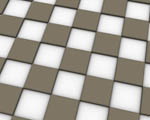 |
|
|
|
Figure 7a: Squares
|
Figure 7b: Sliding
|
Figure 7c: Sliding
|
Figure 7d: Squares
|
|
| 3.3. Rotating. Another way of moving the tiles is the use of rotation. This movement of the tiles seems to have been published first independently by Duncan Stuart and Ron Resch (see ref. [2], p. 117) and it can also be recognized as the Buckminster Fuller Jitterbug transformation which we will discuss later on in Section 5.1. |
|
|
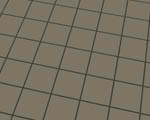 |
|
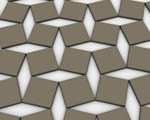 |
|
 |
|
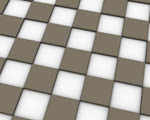 |
|
|
|
Figure 8a: Squares
|
Figure 8b: Rotating
|
Figure 8c: Rotating
|
Figure 8d: Squares
|
|
|
 |
|
|
|
|
|
|
|
|
|
|
|
|
|
|
|
|
|
|
|
|
|
|
|
|
|
|














